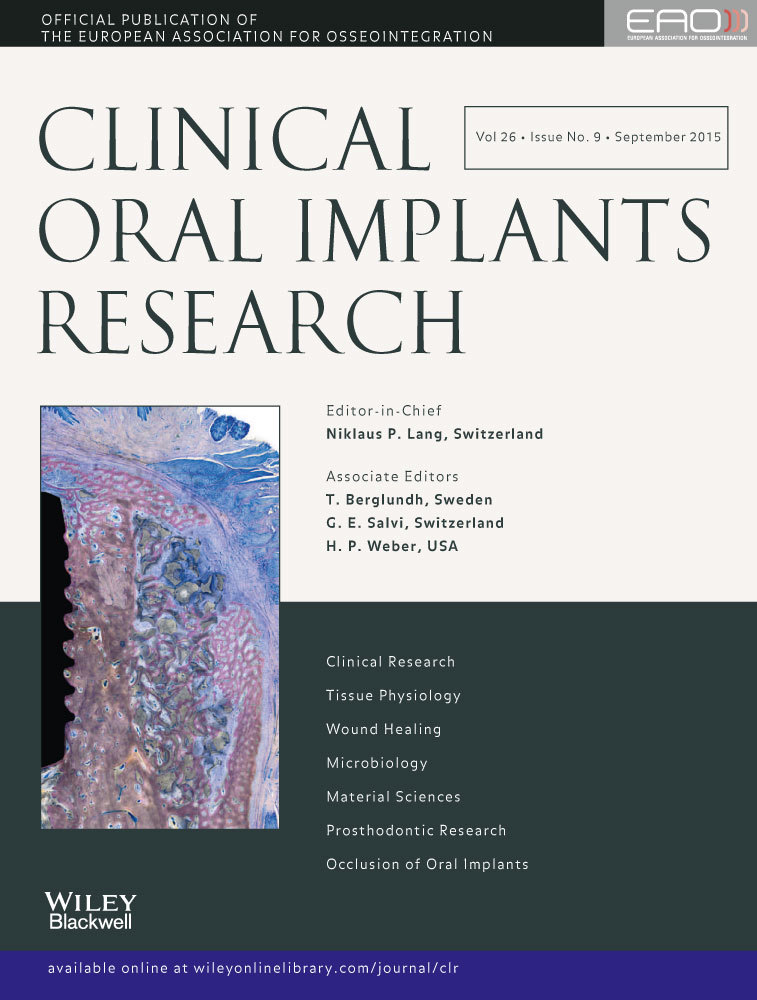Technical and biological complications of single-molar implant restorations
Abstract
Objectives
Retrospective evaluation of the biological and technical complications in implant-supported single-tooth molar restorations performed in a private practice after functional periods of ≥4 years.
Material and Methods
Sixty-five patients (34 females, age 51.7 ± 10.6 years) with 112 implants received annual follow-up examinations and participated in a maintenance program. The survival (in situ) and success (complication-free) rates of implants and superstructures were evaluated. Time-dependent peri-implantitis rates were calculated, and the influencing factors were identified using a multiple Cox regression.
Results
The implant survival rate was 100%. Three of 112 crowns required replacement (prosthetic survival rate = 98.1%). Thirty technical complications were observed: loss of retention (16), ceramic fracture (10), and screw loosening (4). The success rate of the superstructures was 79.0% after 7 years. Overall, 9.2% of the patients developed peri-implantitis (probing depth ≥5 mm, BOP, suppuration, bone loss ≥3.5 mm); (smokers: 41.6%, non-smokers: 1.8%). After 7 years, the time-dependent implant success rate (free of peri-implantitis) was 100% for non-smokers and 58.6% for smokers. Multiple analysis showed a significant effect of smoking (hazard ratio, 19.5; P = 0.008) on peri-implantitis.
Conclusions
Implants with cemented single-tooth restorations in the molar region constitute a reliable treatment in private practice. Smokers have a significantly increased peri-implantitis rate.




